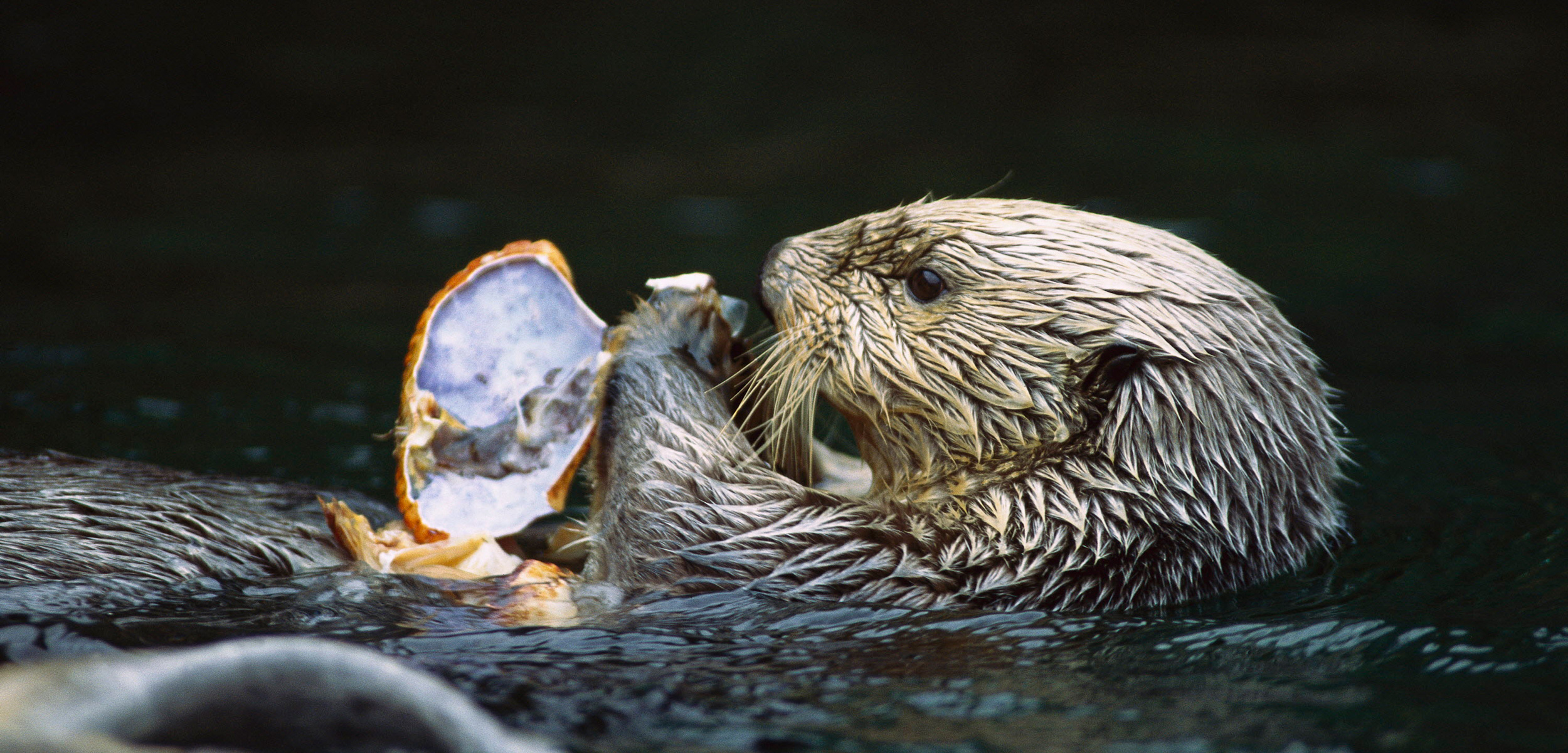Living with Sea Otters Next Door
Ecologists and Indigenous leaders are developing strategies to help communities cope with resurgent sea otter populations.
Article body copy
Stories about declining species have become all too common. But what about when an animal comes back from the brink? It’s welcome news for conservationists, of course. But the return of a species can also have unexpected consequences.
Take the sea otter. By around a century ago, the maritime fur trade had nearly wiped the species out along North America’s west coast. However, with an international treaty and federal statutes banning hunting, and reintroduction programs launched in the 1960s and 1970s, sea otters have since rebounded. They’ve even re-established in some areas where they were once extirpated.
The ecological benefits of sea otters’ return have been well documented. They’re voracious eaters that consume up to a third of their body weight in shellfish, such as clams and abalone, every day. Sea otters eat urchins, too, and by keeping the spiky grazers in check, otters enable much-needed kelp forests to gain a toehold—in turn providing habitat for other species.
But a thriving population of sea otters can also mean fewer shellfish are left in the water. This is a point of tension for Indigenous communities along the west coast that have relied on shellfish for millennia—clam gardens are a testament to this. “There are now communities in which the younger generation doesn’t even know what shellfish tastes like,” says Wii-tsts-koom Anne Mack, a Toquaht hereditary chief who lives in Ucluelet, British Columbia. “It’s had a huge impact on our food security.”
In a new scientific report, Mack, along with researchers from British Columbia’s Simon Fraser University (SFU) and other Indigenous leaders and traditional knowledge holders representing 19 First Nations and tribes from Alaska to British Columbia, identifies strategies to enable coastal communities to coexist with sea otters, while retaining their traditional access to seafood.
“The goal was to move from talking about the negative impacts of sea otter recovery [in these communities] to thinking about what could be done better,” says project leader Jenn Burt, who completed the work while a marine ecology doctoral candidate at SFU and with the Hakai Institute.* “It was really aimed at providing strategies that coastal Indigenous communities and governments could use to improve the situation.”
The project began in 2014, with a workshop at the Hakai Institute on British Columbia’s Calvert Island. There, more than 40 Indigenous representatives identified possible strategies that could help them better adapt to the sea otters’ return to their traditional territories. The researchers then visited two communities that have been living with sea otters for decades—the Alaska Sugpiaq tribes of Port Graham/Nanwalek and the Ka:’yu:’k’t’h’/Che:k:tles7et’h’ First Nations on the west coast of British Columbia’s Vancouver Island, where they surveyed local residents about which strategies they felt would be most effective.
One of the key threads raised at the workshop was that Indigenous communities felt they should be more involved in decision-making about marine resources, including sea otter populations. Indigenous people managed marine ecosystems sustainably for millennia before fur traders arrived, says Skil Hiilans Allan Davidson, a Haida hereditary chief and study coauthor. But federal laws like Canada’s Species at Risk Act have historically provided little opportunity for Indigenous voices to be heard, Davidson says—despite their communities being the most directly affected by the sea otters’ return.
Surveys conducted by the researchers in the two Indigenous communities show how the community’s level of involvement in managing sea otters affects people’s perceptions of the marine mammals. The Alaskan Sugpiaq tribes, who have been involved in monitoring sea otter populations and who can legally hunt sea otters for the purposes of making traditional handicrafts, report relatively positive attitudes toward the animal.
The Ka:’yu:’k’t’h’/Che:k:tles7et’h’ First Nations hold more negative perspectives. Sea otters were reintroduced into their territory by the Canadian federal government in the 1970s and they have since gone on to decimate the local shellfish population. Unlike the Sugpiaq tribes, the Ka:’yu:’k’t’h’/Che:k:tles7et’h’ have no authority to hunt sea otters. “Nobody asked us about reintroducing [sea otters] and we’re the ones who live here,” says one Ka:’yu:’k’t’h’/Che:k:tles7et’h’ person quoted in the paper. “I miss being able to go harvest foods.”
The study also identified other strategies that both communities felt could help. These included establishing locally designed management plans for sea otters, incorporating Indigenous knowledge and practices into these plans, and building networks for communities to share sea otter information and experiences. These practices are not currently in place—or at least not widely adopted—but were identified as likely to be beneficial based on the communities’ past experiences.
There is clearly a need for Indigenous people to have a voice when it comes to managing sea otters, says James Estes, an ecologist at the University of California, Santa Cruz, who was not involved in the study. But Estes cautions that we should be more explicit about the potential trade-offs when we talk about coexisting with sea otters—it could mean hunting them, or excluding them from areas to allow shellfish harvesting.
“If you’re going to go down that pathway, you have to be willing to confront those detailed questions,” says Estes.
* The Hakai Institute and Hakai Magazine are both part of the Tula Foundation. The magazine is editorially independent of the institute and foundation.

